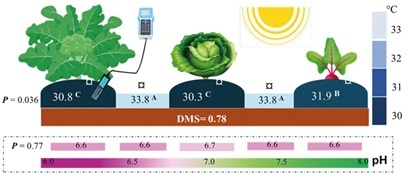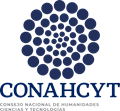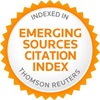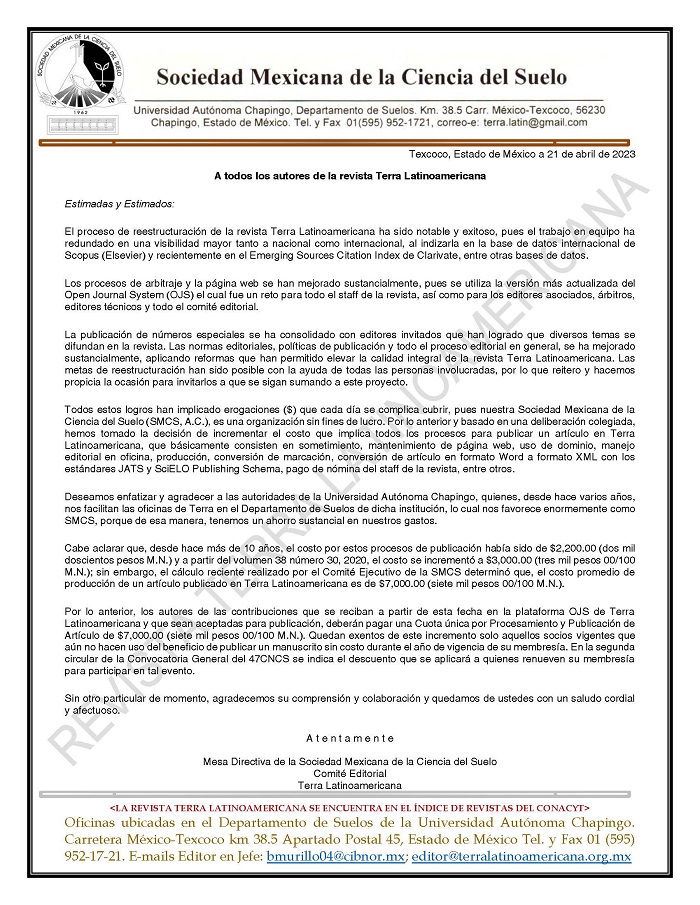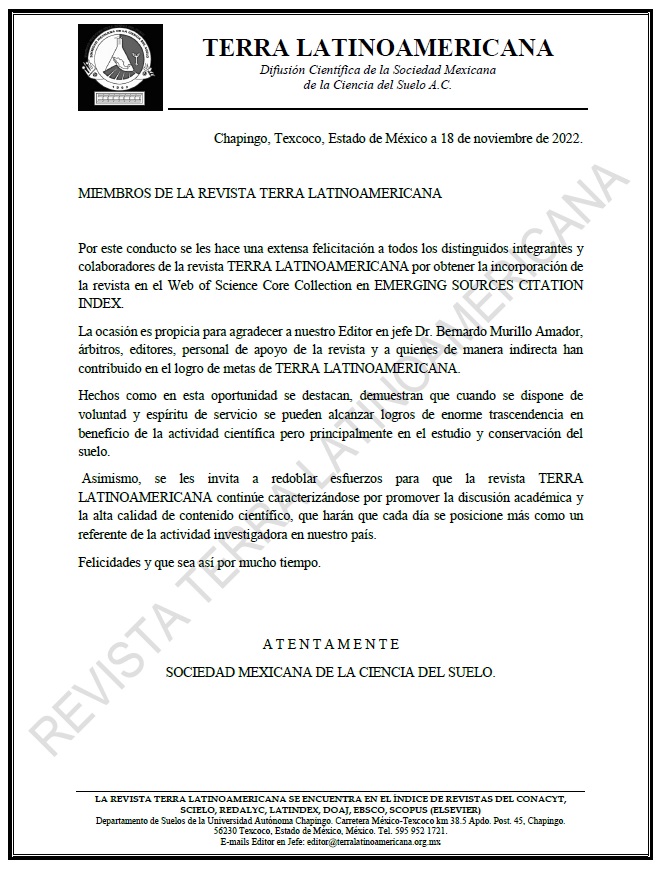Nutriments Dynamics in the Rhizosphere and its Ef fect on Growth and Distribution of Fe and Mg in Vegetables
DOI:
https://doi.org/10.28940/terralatinoamericana.v43i.1975Keywords:
soil analysis, biomass, electrical conductivity, plant residuesAbstract
The cultivation of family gardens is crucial for producing fresh and high-quality food, with an emphasis on backyard agriculture in Mexico. The vegetable residues generated during the production and consumption of vegetables can be rich in nutrients and of fer opportunities for ef ficient use, such as in animal feed or biofertilizer production. This study evaluates nutrient levels in the rhizosphere of three key crops: broccoli, cabbage, and beet, and analyzes the distribution of Fe and Mg in plant organs. The study was conducted in Suchiapa, Chiapas, Mexico. Soil analysis was performed using a GEMHO-TY model multiparameter soil analyzer (China) before transplanting and again 60 days later to determine the content of nitrogen (N), phosphorus (P), potassium (K), pH, electrical conductivity, and temperature. Raised
beds measuring 20 m in length, 0.4 m in width, and 0.25 m in height were established, and a drip irrigation system was installed. At the stage of physiological maturity, soil conditions and the nutrient composition of the species were determined by ICP-OES. Soil analysis revealed significant variations in temperature and electrical conductivity, as well as the identification of critical stages for NPK fertilization. Additionally, in terms of dry matter, a high magnesium content (12.81 mg g-¹) was found in beet leaves, as well as a high iron content (2.2 mg g-¹) in the roots of broccoli and cabbage, highlighting their potential as nutrient sources.
Downloads
Publication Facts
Reviewer profiles N/A
Author statements
- Academic society
- Terra Latinoamericana
- Publisher
- Mexican Society of Soil Science, C.A.
